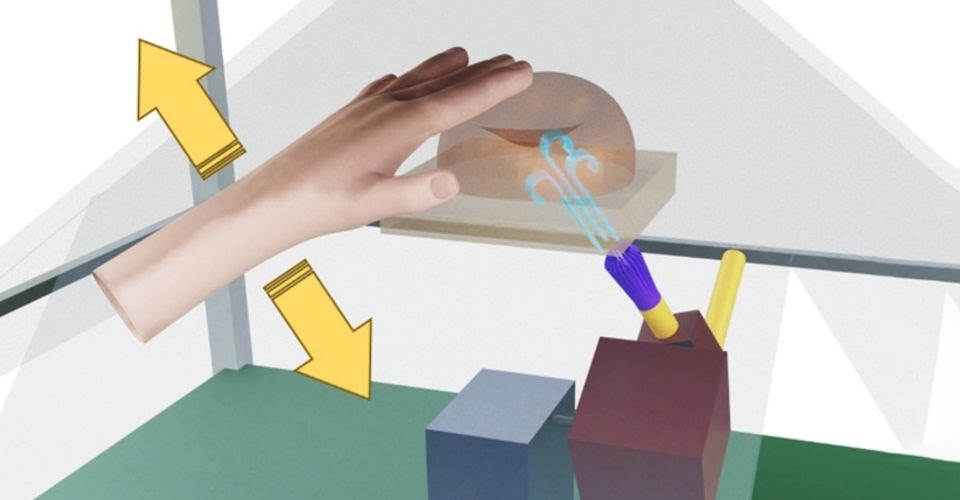Touchable Holograms: Sci-Fi Fantasy Becomes Reality in 2023
Remember shaking hands with Princess Leia in your living room? Or feeling the smooth, cool surface of a virtual planet? It's no longer the stuff of science fiction. In 2023, researchers at the University of Glasgow have made significant strides in bringing interactive holograms with touch to life.
Gone are the days of passive holographic projections. This new technology, dubbed aerohaptics, uses jets of air to simulate the sensation of touch, creating a truly immersive experience. Imagine feeling the texture of a virtual object, the grip of a handshake, or even the weight of a basketball in your hand – all without physical contact.
Breaking Barriers: Beyond VR Controllers and Gloves Unlike traditional VR and AR setups that rely on handheld controllers or bulky gloves, these touch-sensitive holograms require no additional hardware. This opens up a world of possibilities for virtual and augmented reality applications.Think about it: surgeons practicing delicate procedures on holographic models, architects feeling the contours of their designs in real-time, or students dissecting virtual frogs without harming a single creature. The possibilities are endless.
Beyond Touch: A Multi-Sensory FutureThe researchers, led by Dr. Ravinder Daahiya, aren't stopping at touch. They envision a future where these holograms not only feel real but also smell and react to temperature. Imagine exploring a virtual rainforest and feeling the humidity on your skin, or baking virtual cookies and smelling the delicious aroma.

From Basketball to the Holodeck: A Glimpse into Development To showcase their aerohaptic system, the team created a virtual basketball that users can convincingly touch, roll, and bounce. They've even managed to replicate the ball's familiar rounded shape through the air jets. The next step? Adding more dimensions, temperature variations, and even scents to the mix.
2023 and Beyond: The Dawn of Touchable Holograms While a Star Trek-style holodeck might still be a distant dream, these advancements in 2023 mark a significant leap towards a future where holograms are not just seen, but experienced.

With continued research and development, touch-sensitive holograms could revolutionize everything from entertainment and education to healthcare and design.
Stay tuned for further updates! As this technology evolves, we'll keep you informed of the latest developments in the exciting world of touchable holograms.
The article was written by Amit Caesar AND BARD
Here are some exciting new articles you don't want to miss!
- Feeling Frosty: VR Cold Sensation Tech is Here
- Apple Vision Pro: The Future of Spatial Computing
- Can Virtual Reality Smell Your Farts?
- Meta Quest 3: Everything you need to know
- Amazing products for your VR from Amazon
- The Best Accessories for Microsoft Flight Simulator
- Experience the future of sex with virtual reality and artificial intelligence
- Virtual Reality: A whole new world opens up to you on eBay
- How to Watch Netflix in VR: A Step-by-Step Guide
Here are the links to my social media pages:
Facebook: [link]
YouTube: [link]
LinkedIn: [link]
Twitter (x): [link]





